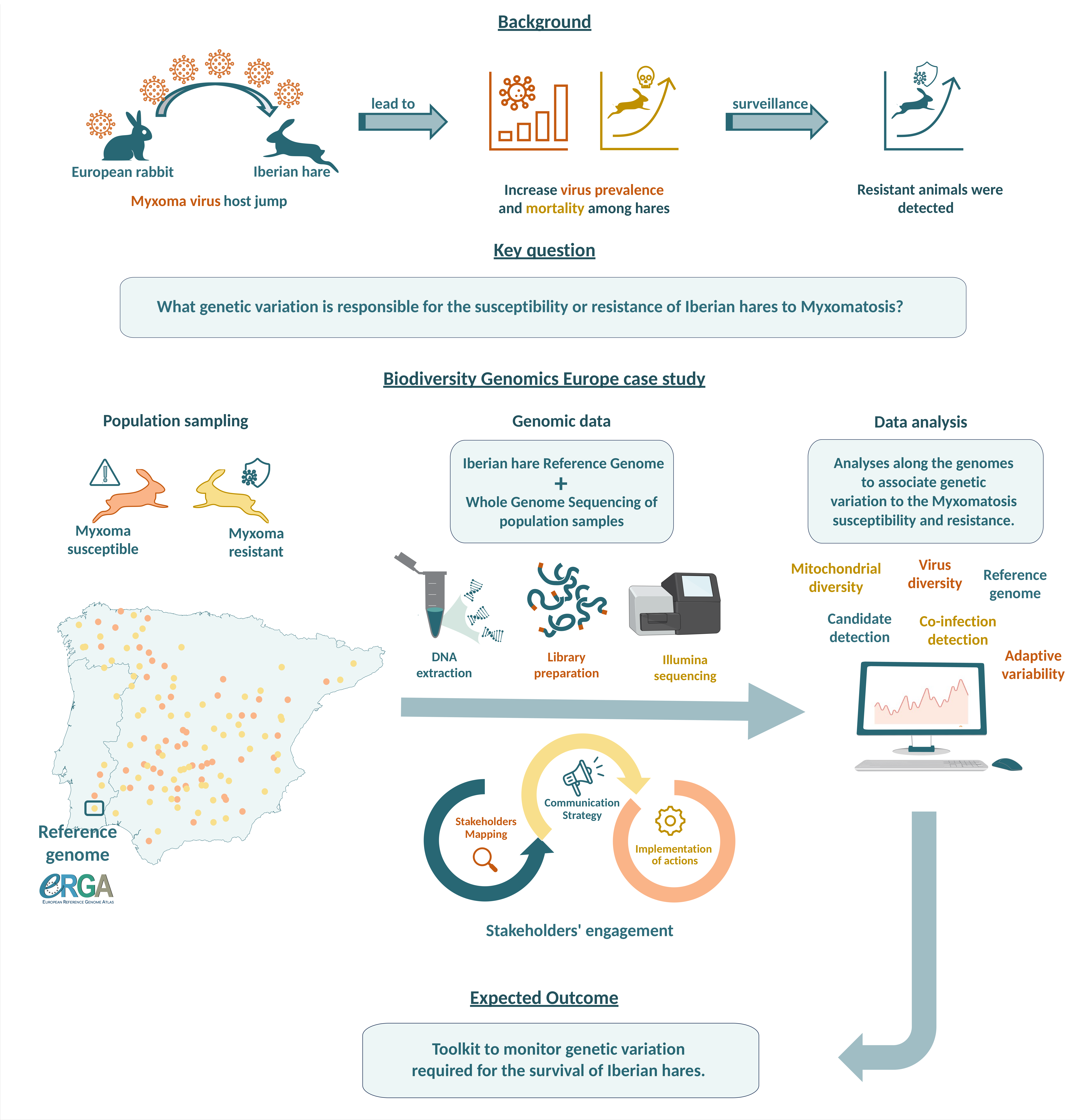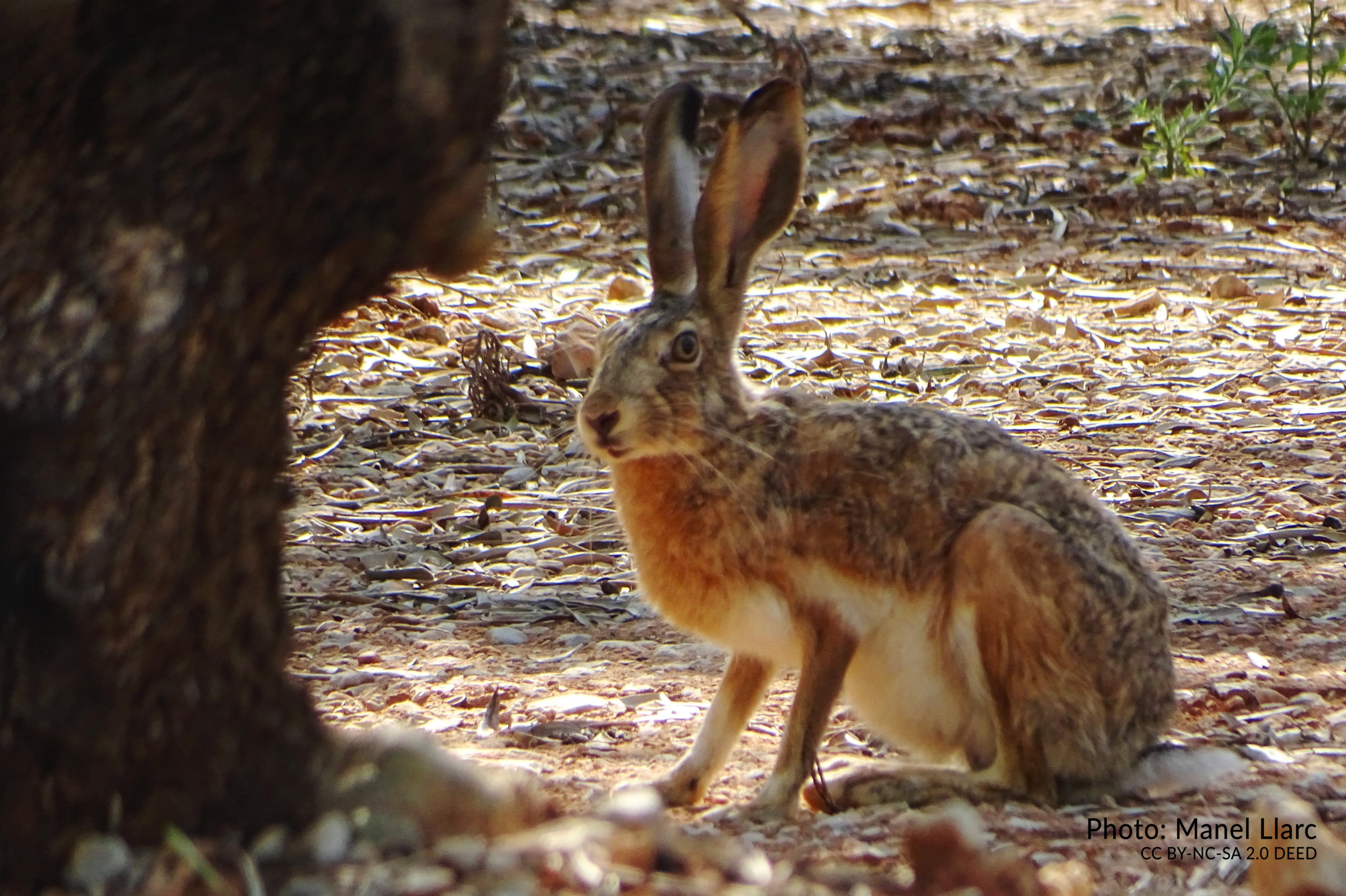Unravelling the genomic landscape of myxomatosis susceptibility in Iberian hares
João P. Marques (BIOPOLIS-CIBIO); Beatriz Cardoso (BIOPOLIS-CIBIO, U. Porto, IREC); João Queirós (BIOPOLIS-CIBIO, U. Porto); Liliana Farelo (BIOPOLIS-CIBIO); Joana Pinto (BIOPOLIS-CIBIO); Pedro Esteves (BIOPOLIS-CIBIO, U. Porto); Fernando Ballesteros (Fundacion Uso Pardo); Pelayo Acevedo (IREC); Mónica Martinez-Haro (IREC); Chirstian Gortazar (IREC); Jaakko Pohjoismäki (U. Eastern Finland), José Melo-Ferreira (BIOPOLIS-CIBIO, U. Porto); Paulo C. Alves (BIOPOLIS-CIBIO, U. Porto, EBM); Joana Abrantes (BIOPOLIS-CIBIO, U. Porto) and Ana M. Pinto (BIOPOLIS-CIBIO, U. Porto)
This study will allow developing genetic tools to monitor genetic variation conferring resistance to the myxomatosis disease.
Completing our understanding of the underpinnings of resistance to myxomatosis
Disease outbreaks are important threats to wildlife and can cause cascading disruptive effects in ecosystems. In the Iberian Peninsula, the Iberian hare is a cornerstone species with ecological and economic importance. The species has recently experienced strong population declines caused by myxomatosis outbreaks, which originated from the host-jump of the Myxoma virus from the European rabbit.
Primary purpose:
Our study aims at harnessing the power of genomic analyses anchored on high quality reference genomes to unravel the genetic factors influencing the susceptibility and resistance of Iberian hares to myxomatosis. Using cutting-edge genomic tools, our research intends to inform disease control, species conservation and management.
How we will proceed:
We will contrast variation along the whole genome of Iberian hares that are either susceptible or resistant to the viral disease, to understand how host genetic variation influences the impacts of the disease. Analyses of unaffected neighbouring hare species will contribute to complete our understanding of the underpinnings of resistance to myxomatosis. This study will allow developing genetic tools to monitor genetic variation conferring resistance to the myxomatosis disease.
This work showcases how ERGA and BGE are advancing genomic tools for biodiversity management, and how cutting-edge genomics provide essential tools to mitigate and control the spread of wildlife diseases.
BGE genome application pillar leader Jose Melo-Ferreira provides details about the case study:





